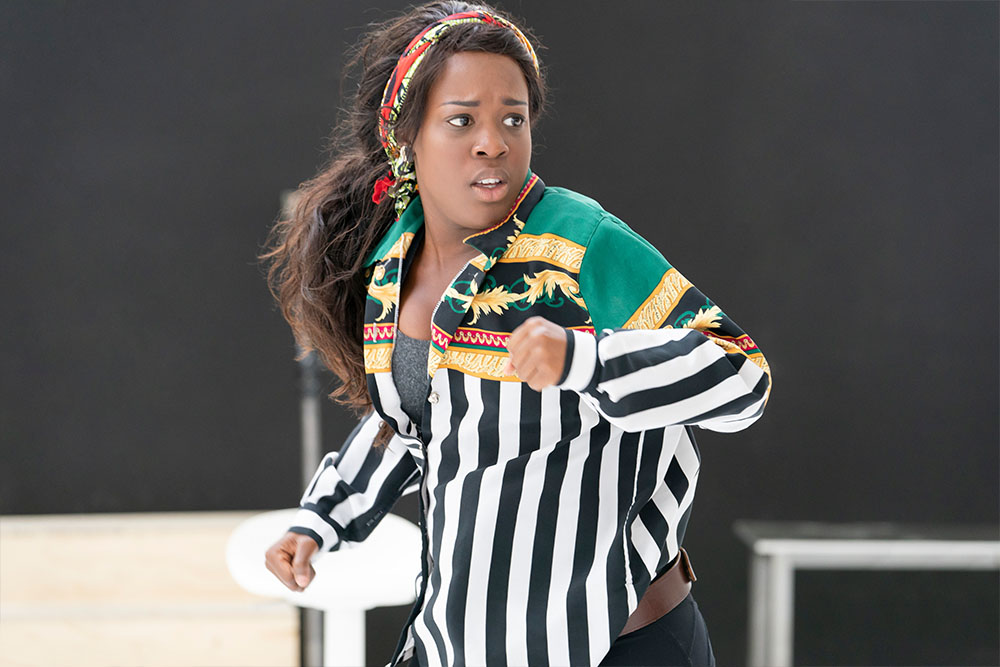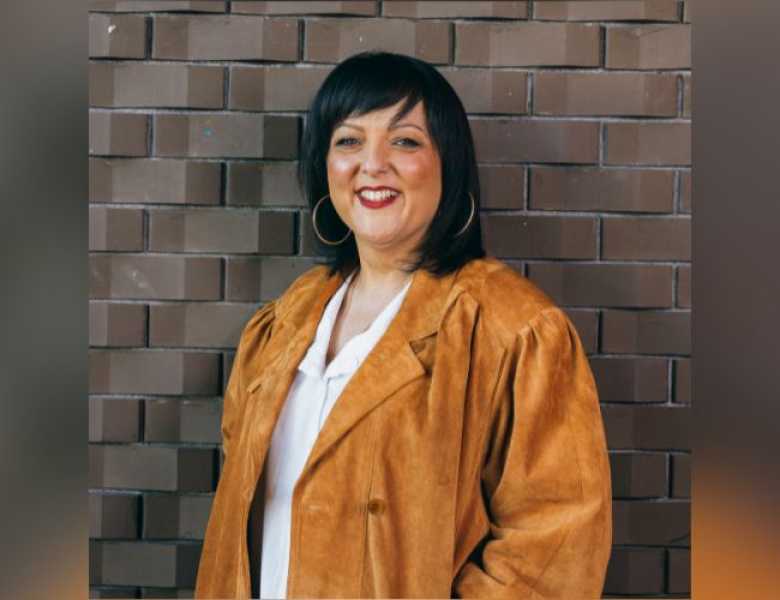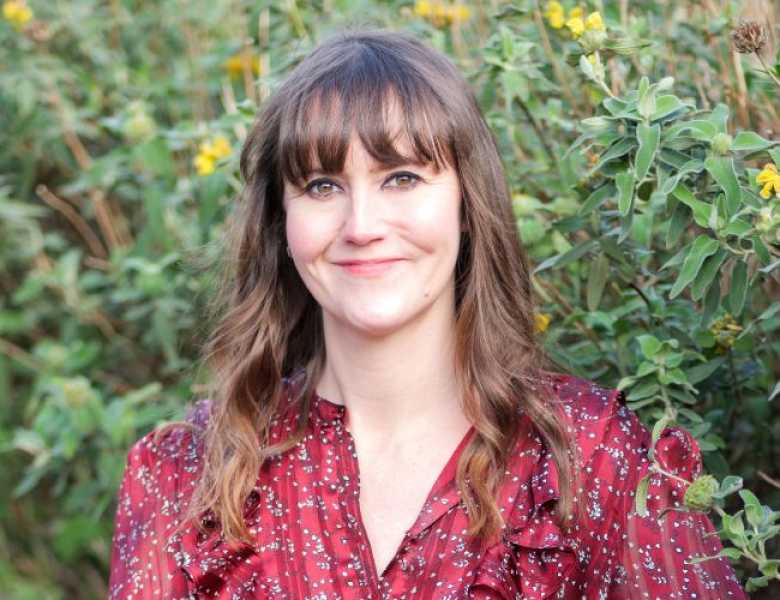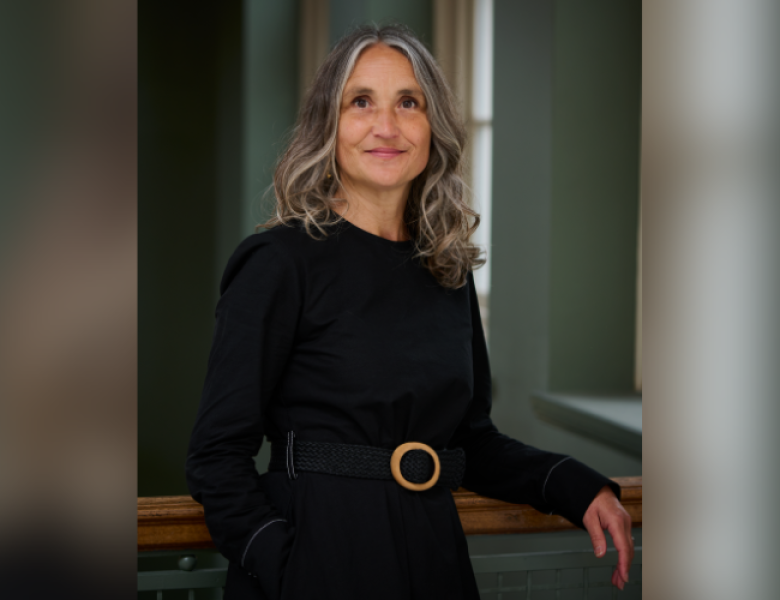Box Office
- CALL: 020 7922 2922
- EMAIL: boxoffice@youngvic.org
Visit us
Young Vic, 66 The Cut, Waterloo
London , SE1 8LZ
Newsletter Sign up
Sign Up TodayAuthor’s note: The material here is presented in the form of a personal investigation rather than as a formal scholarly article in order to concentrate as much on the emergence of the evidence and its plausibility as on any claim itself, leaving it to the reader to decide how convincing that evidence is.
I was recently invited to contribute a ‘text revisited’ chapter to a Festschrift for a friend and proposed an essay entitled ‘Samuel Beckett’s Happy Days revisited’. This essay, due to appear in January 2012, published by Peter Lang, considers the role of music, song and poetry in the play (e.g. Yellen and Alger’s 1929 song, Thomas Moore’s Irish Melodies and the unlikely medley of W. B. Yeats and Jerome Kern), its links with the visual arts and with philosophy and psychoanalysis, especially in the light of Beckett’s various 1930s notes. I also drew on certain of Beckett’s life experiences at that time, uncovered while researching my biography and suggested other literary sources of inspiration found in letters, some of which have only recently become accessible.
Looking at Happy Days again (after, in my case, a gap of almost thirty years), led me to focus attention on the startling visual images of Winnie, buried first up to her waist, then up her neck in the mound, and of her companion Willie, first seen in his boater with a club ribbon, then in a top hat and morning suit. Was there anything new to be discovered about the potential sources of inspiration for these images?
Let me first recapitulate what we already know about the play visually – or at least what we think we know. First, Dante: the Divina Commedia was, of course, one of Beckett’s favourite books in the whole of European literature and, in his magnificent illustrations to the Inferno, Gustave Doré memorably depicted Dante’s Damned with their heads or lower limbs protruding from the frozen lake or the ‘livid stone’. There are indications within the play that such a highly graphic, visual evocation of Hell may well have played a part in Beckett’s initial inspiration. But evidence has also come to light of Beckett’s interest in and close knowledge of modern movements in painting like German Expressionism and Surrealism, although he was much keener on the first than he was on the second. I therefore explored some affinities with modern painting in the light of Beckett’s German diaries. In addition, I noted that the closing frames of Buñuel and Dalí’s 1929 film Un chien andalou, with its image of two women buried up to their waists on the beach, had often been cited by scholars (including myself) as a potential source for Winnie’s progressive burial in the earth.
From my biography of Beckett, I included as a further possible source the photograph by Angus McBean taken to advertise the 1938 review The Fleet’s Lit Up of the actress Frances Day, buried in sand in a basket and, like Winnie, holding a lock of hair in her hand (with another unseen person holding up a mirror in his or her hand). The resemblances are striking. What has not been pointed out, however, is that Angus McBean used the same ‘half-buried in the earth’ motif in two other photographs: one of the British actress Flora Robson (also taken in 1938), with her bust again apparently bursting out of the earth, and one of gamine film-star Audrey Hepburn, photographed yet again, but in 1951, emerging from the sand, flanked by two classical pillars. So far, one might say, a moderately interesting ‘addition to company’ but nothing to get too excited about.
But recently an additional possible source of visual inspiration has emerged that I mentioned in the ‘Happy Days revisited’ essay only in two brief sentences and without any of the supporting evidence. In Charlotte, North Carolina (where two of our three children live with their families), the Bechtler Museum of Modern Art, designed by Mario Botta, the architect of the MoMA in San Francisco, was built especially in 2009 to house the fine 20th century art collection of the Zurich industrialist Hans C. Bechtler (1904-1998) and his wife Bessie. It was gifted to the city of Charlotte by their son Andreas Bechtler and was opened to the public on 2 January 2010.
Shortly after the museum opened, I visited it twice. Walking round the gallery for the first time, I was astonished to see a remarkable, vividly coloured, kaleidoscopic oil painting by Max Ernst entitled Projet pour un monument à W. C. Fields, which appeared to bear striking resemblances to Samuel Beckett’s play Happy Days. In the centre of the painting is a female figure, painted as a rotund, buxom torso in red, wearing an ornate hat and holding aloft an unfurled, multi-coloured parasol. The woman, as the accompanying audio guide explained, is based on the celebrated film actress Mae West. The right foreground is almost dominated by the large head of a male figure, wearing a top hat and reaching out his hand. The male head, the audio guide went on, is that of the comic actor W. C. Fields and the painting had apparently been inspired by the (unique) collaboration of Fields and Mae West on a 1940 Universal Studios’ film called My Little Chickadee. In English, the painting is known, in fact, as ‘Homage to W. C. Fields and his Little Chickadee’, although, for reasons that will become clear, it has been reproduced in relatively few books on Ernst.
Intrigued by the unusual light-filled setting of Happy Days and its internal preoccupation with the element of fire, it was the brightness of the colours of the painting, especially its fiery reds that also struck me forcibly. One aspect of the painting, dissimilar, it might appear, to Beckett’s play, was the presence of a small face looking on quizzically from the far left and echoing in its colours the large hatted head on the right. Was this a surrogate for the painter himself or for the observing spectator? Even here one is reminded though of the presence within Beckett’s text of the Shower and Cooker visitors, who, as Beckett himself commented very precisely, represented the spectator (SB, letter to Jacoba van Velde, 28 Feb. 1962), as well as the constant repetition of the motif of an observing eye: ‘Someone is looking at me still . . . Eyes on my eyes.’ Yet, in recognising various parallels between Ernst’s painting and Beckett’s play, I was concerned that I might be seeing what I wanted to see, the victim perhaps of what could be termed professional deformation.
Was there any connection between the play and the painting? And which came first, painting or play? The second of these questions was quickly answered, since the date of 1957 is inscribed with the artist’s signature on the canvas itself, printed on its gallery description and on a reproduction that I promptly purchased from the gallery shop. And we know, of course, that Beckett’s play was written in 1960-61. But when did Hans Bechtler purchase the picture for his private collection? And might Beckett have seen it in Paris before or even after it was purchased? In a general way, there were a sufficient number of personal links between Beckett and Ernst for Beckett not only to have been aware of Ernst as a powerful Surrealist presence (he refers to him, for instance, along with Hans Arp in 1937 in the fourth of his German diaries) but also to have taken an interest in his work. The German painter had after all briefly been married to Peggy Guggenheim, with whom Beckett had had a passionate sexual affair in late 1937 and early 1938, and, following a meeting between them in 1967 arranged by Werner Spies, a good friend of Max Ernst and a specialist on his work, Ernst went on to illustrate a trilingual edition of Beckett’s From an abandoned work. (See my note in The Beckett Circle, Spring 2008, vol. 31, no. 1)
An e-mail query next to the Bechtler Museum elicited the helpful information that Hans Bechtler had in fact purchased the painting in 1958. This was a little discouraging at first since it made it more difficult for Beckett to have seen the picture, since it had been held in a private collection from 1958 until 2010. But then, later the same day, a key piece of the jigsaw came in the form of a postscript from Hallie Ringle, a young researcher at the Bechtler Mueum who was looking into my queries, saying that the picture in question was reproduced in Patrick Waldberg’s 450 page biography of Max Ernst.
Now it is at a moment like this that a scholar’s antennae begin to twitch uncontrollably! For since I happened to know that Patrick Waldberg was a personal friend of Beckett, dining and playing billiards with him on many occasions, this was exciting news indeed. I also happen to possess copies of some of Beckett’s letters to Waldberg, which are preserved in the Bibliothèque Jacques Doucet in Paris.
A few days spent searching through these and other correspondences established that Beckett was indeed seeing Waldberg at the time he was writing his Max Ernst biography, meeting him either alone or with his second wife Liane for dinner early in 1958 and seeing him once in the company of Marcel Duchamp, probably on 26 June 1958. (SB, letter to Patrick Waldberg 13 June 1958). About that time Beckett also read several of Waldberg’s other books and it is clear that the art critic sent him complimentary copies of them, one being his Promenoir à Paris which Beckett read in only one session at the beginning of October 1960 (SB, letter to Waldberg , 5 Oct. 1960), just as he was starting to write Happy Days. Another was Waldberg’s 1961 book Mains et merveilles. Peintres et sculpteurs de notre temps which Beckett read in February 1962, before sending it on as a gift to Kay Boyle (SB, letter to Kay Boyle, 22 Jan. 1962).
The link (if indeed there is such a link) would appear then to be with Waldberg’s biography of Max Ernst, which was published by Jean-Jacques Pauvert in December 1958. There, indeed, the ‘W. C. Fields’ painting is printed, but in black and white not colour, in the sixth and final section of the book, entitled ‘Suite sans Fin’, perhaps as a tribute to Beckett’s post-war story ‘La Fin’, first called and printed in Les Temps modernes as ‘Suite’! In view of my previous comments on the intense, fiery nature of the colours of the original painting, the black and white character of the reproduction was initially disappointing. Yet the outlines of the two figures are much more sharply delineated in black and white than they are in the more kaleidoscopic painting. Interestingly too, in the same section there is another painting of the top-hatted head of W. C. Fields alone (pace Willie) also painted in 1957, which was owned by Patrick Waldberg. We cannot be certain that Beckett had his own copy of Waldberg’s handsome first biography of Max Ernst. There was no such copy in his library when he died. But then neither were there other books by Waldberg that we know for certain from the correspondence that Beckett both owned and read. He gave away hundreds of books, especially towards the end of his life.
However, I also learned from Werner Spies’ Max Ernst A Retrospective that to celebrate the publication of Waldberg’s biography of Ernst an exhibition of the painter’s work had been arranged at La Hune bookshop on the Boulevard Saint-Germain. I have not yet been able to establish whether the W. C. Fields painting was indeed exhibited there. But, even if Beckett had not been able to see it at an exhibition, it would have been surprising if Waldberg had not discussed the most recent of Ernst’s pictures with Beckett or shown him some of the illustrations from his biography of the painter during their multiple meetings in 1958. And we can almost guarantee that Beckett would have called at La Hune and have studied the book there.
So, even if he did not possess his own copy – which, in view of Waldberg’s habit of giving him copies, I still find highly likely – the odds are surely very high that he would have been acquainted with this particular painting, either through an exhibition or in the biography itself. Although the evidence remains circumstantial, it seems to me to be sufficiently convincing to establish at least a possible visual influence on Beckett as he came to imagine the appearance of the two figures in Happy Days.*
- Jim Knowlson
---------------------
* I am most grateful to Werner Spies, Anne Arikha and Shannon White and Hallie Ringle of the Bechtler Museum of Modern Art for answering my queries and to John Pilling, Matthew Feldman and David Addyman for reading early versions of this note.
Happy Days runs at the Young Vic until 21 Mar. Click here to book now.





